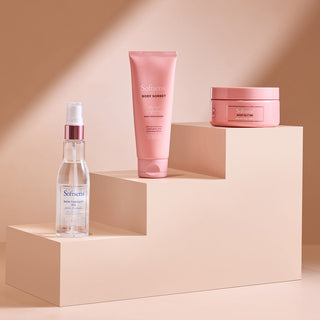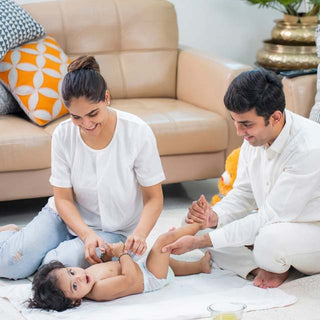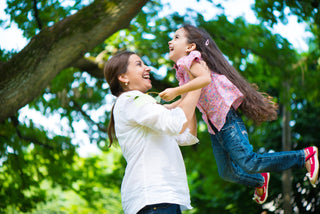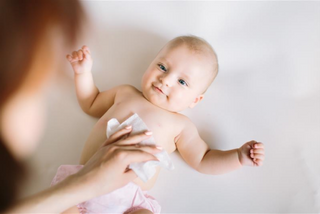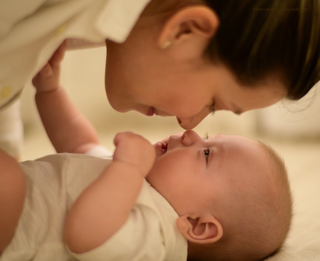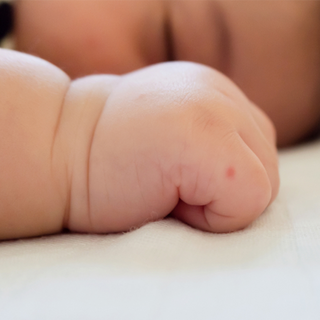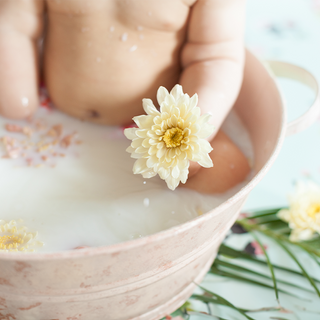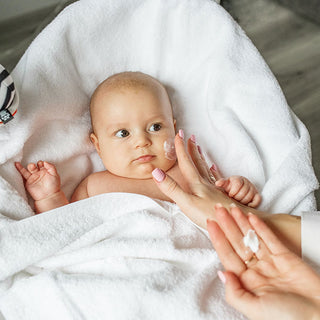
It can be quite worrying to see any kind of rash or irritation on your baby’s precious skin. But, a lot of infant skin conditions are not as bad as they seem and can clear up quickly with the right care. Let’s take a look at the skin condition known as ‘cradle cap’ and learn what you can do to treat it if it shows up on your baby’s skin.
What is cradle cap?
Cradle cap is the more commonly used term for ‘seborrheic dermatitis’ in infants. To put it simply, it is a non-inflammatory skin rash that is seen in infants. While cradle cap in infants is mostly seen in the scalp area, in some cases it can also spread to your child’s forehead, ears, eyes, nose and even the neck or chest. It typically looks like dry or greasy scaly patches of skin that are yellow or white-ish in colour, and typically shows up in babies between 0-3 months of age.
What causes cradle cap?
Cradle cap is caused when your baby’s oil glands go into overdrive, secreting excess oil, which causes dead skin cells to get trapped under the skin, forming scaly patches. One of the reasons this may happen is when a mother’s hormones get passed on to the baby at or soon after child birth. This is also why most babies get cradle cap within the first few weeks after birth.
However, it’s important to remember that cradle cap is not itchy or painful. In severe cases of cradle cap, your baby may be uncomfortable but in most mild/moderate cases, it is quite harmless. As cradle cap is caused by oil secretion, it is NOT a contagious condition and cannot be passed from one baby to another.If your baby has cradle cap, don’t worry. With the right care, cradle cap can clear up within a few months and doesn’t usually last longer than your baby’s first year.
How to treat cradle cap in babies
The treatment for most mild to moderate cases of cradle cap is quite simple, but must be consistently applied. Follow this 3-step processdaily to help clear cradle cap.
-
First, massage the affected area on your baby’s scalp with a gentle & safe oil.
The oil helps soften the scaly skin, so that it slowly falls off. To do this, make sure you use a mild baby hair oil such as Softsens Baby Natural Hair Oil. Made from a trademarked bio-nourish blend of 7 natural seed oils, it helps loosen dry flakes and moisturizes and nourishes baby’s scalp to reduce the effects of cradle cap. Massage the oil gently into your baby’s skin with your fingers, but make sure you don’t rub the skin harshly. This can help increase circulation, loosen up the skin and is also quite relaxing for your little one. Don’t leave the oil on your baby’s skin too long as this might worsen the rash.
-
Brush your baby’s scalp gently
After oiling your baby’s scalp, use a soft baby-friendly brush to gently brush away any skin that has flaked off. You can even use a soft toothbrush for this purpose. Be very gently while doing this as you don’t want to scratch or aggravate your baby’s delicate skin in any way.
-
Wash your baby’s scalp daily with a gentle baby shampoo
After completing the first two steps, it’s time to give baby a bath. Wash your baby’s scalp with a mild baby shampoo or one that is prescribed by your doctor for this purpose. Use a gentle baby shampoo for cradle cap like Softsens Baby Shampoo- a light aqua-based shampoo with a tear-free formulation that is free from parabens and harmful chemicals.While washing your baby’s scalp, once again massage gently using your fingers and use a soft brush to brush away the dead skin cells. Rinse your baby’s scalp well to ensure that there is no product residue, as this can cause further irritation.
In some cases of baby cradle cap, your doctor may recommend that you use a medicated shampoo and/or a topical cream to clear it up. But in most cases, this is not necessary. Always consult your pediatrician to be sure anyway.
Here are some other important points to remember during cradle crap treatment:
-
Don’t scratch or scrape at your baby’s skin.
Don’t forget that your baby’s skin is extremely thin and delicate. Scratching or even excessive rubbing can lead to cuts, infections, scars and can make the rash much worse.
-
Pay close attention to what you apply on your baby’s skin
Use safe and extremely mild products on your baby’s skin at this time. Stay away from any ingredients that may be a little harsher on your baby’s skin, including home remedies.
-
Make sure there is no product build-up on your baby’s scalp
Always wash off products well as product residue can remain on your baby’s scalp and may irritate skin even further. Simply keep your baby’s skin clear and clean all through the day.
-
Don’t cover your baby’s head with a beanie to hide the rash. Promote healing by letting your baby’s skin breathe.
-
Check if your baby is stressed for any reason
Babies can be distressed due to a number of reasons. This stress can cause skin flare-ups too.Check if your baby is sleeping and eating well, and is not suffering from any kind of discomfort.
-
Visit the doctor if you notice that -
- The rash has suddenly gotten much worse and starts spreading to other areas.
- Your baby’s scalp is emitting a pungent odour. This could be signs that the rash has turned into a yeast infection.
- There is any kind of secretion from the affected area.
- Your baby looks uncomfortable and distressed due to the rash.
Got any more questions about baby cradle cap? Let us know in a comment below and we’ll get back to you as soon as we can.




